Table of Contents
ToggleIntroduction
Welcome to the Top 7 exercises that start with B, a fresh instalment in our popular alphabet-based workout series designed to make fitness fun, structured, and easy to follow. After the fantastic response to our post on exercises that start with E, we’re excited to bring you a new set of b exercises tailored specifically for beginners.
Organising fitness routines alphabetically, like exercises beginning with B, isn’t just clever, it’s effective. It helps learners quickly associate movements with names, making the process of remembering and practising new workouts easier and more engaging. These exercises starting with B don’t require a gym membership or expensive gear. Most of them are bodyweight-based and perfect for small home spaces.
If you’re just stepping into the world of fitness or looking for ways to add some variety to your routine, these b exercises are accessible, adaptable, and surprisingly powerful. They work multiple muscle groups while improving flexibility, coordination, and endurance.
Wondering how to start exercises that start with B? Don’t worry, we’ll walk you through everything step by step. From detailed instructions to common mistakes to avoid, you’ll have all the guidance you need.
Let’s dive in and see why exercises that start with B deserve a spot in every beginner’s workout plan!
What Are Exercises That Start With B?
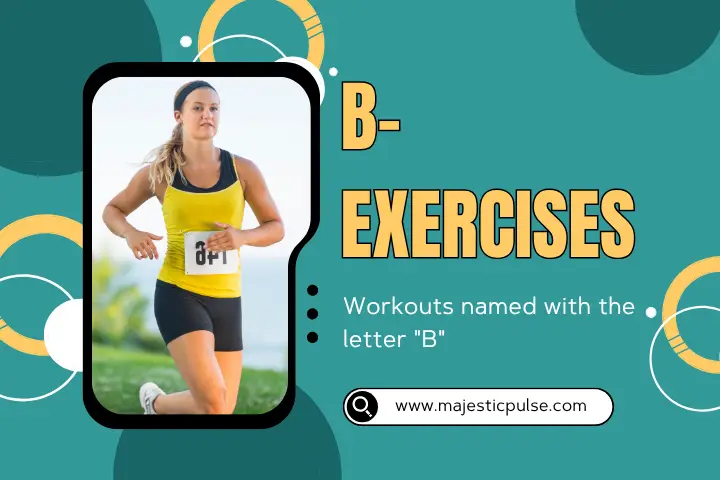
Let’s break it down! Exercises that start with B are exactly what they sound like: workouts named with the letter “B.” You’ve probably heard of burpees, bear crawls, or bicycle crunches, classic examples of b exercises that pack a punch.
These exercises starting with B aren’t just gimmicky; they’re functional, popular, and backed by trainers across the world. From beginners to seasoned athletes, many people incorporate exercises beginning with B into their routines because they’re versatile and easy to remember.
Why does this matter for you? Well, when you organise your workouts alphabetically, like focusing on exercises that start with B today, you make fitness more fun and less intimidating. It’s a simple trick that turns routine building into a game, beneficial if you’re just starting.
What makes b exercises especially great is their all-around usefulness? Some build strength (like bent-over rows), others improve flexibility (like bridge pose), and a few offer intense cardio benefits (looking at you, burpees and box jumps). That’s a solid mix of benefits just from one letter!
Even better? Most exercises starting with B require little to no equipment, perfect for home workouts or minimal gym setups. Whether you’re in your living room, on a mat, or at the park, exercises beginning with B give you options without complications.
And if you’re wondering how to start exercises that start with B, don’t stress. We’ve got you covered with tips, proper form guidance, and beginner-friendly variations. You’ll soon see how approachable and effective these moves can be.
Ultimately, the Top 7 exercises that start with B we’re sharing in this article offer flexibility, simplicity, and serious impact, no matter your fitness level. Get ready to move, sweat, and enjoy the process, one “B” at a time.
Top 7 Exercises That Start With B
Whether you’re building a home routine or adding variety to your gym sessions, these Top 7 exercises that start with B provide a powerful mix of strength, cardio, and core training. Each b exercise is beginner-friendly, adaptable, and targets major muscle groups to help you build a balanced fitness foundation.
1. Burpees
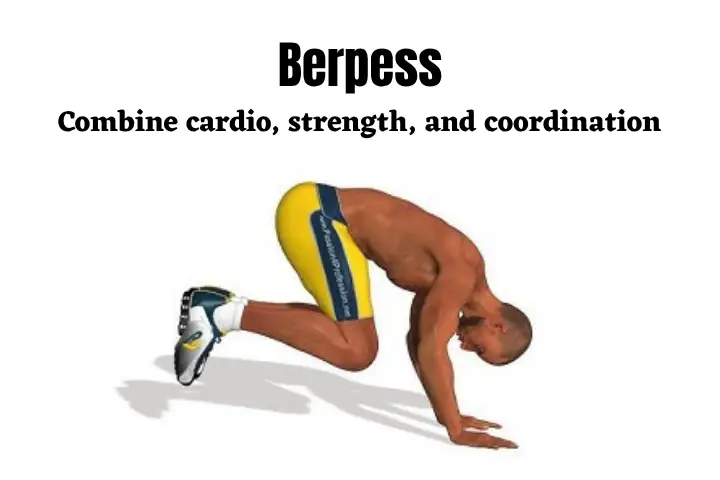
Burpees are one of the most dynamic exercises starting with B, designed to combine cardio, strength, and coordination in one full-body move. Originally used in military fitness testing, burpees torch calories, improve stamina, and build strength by engaging nearly every major muscle group. While they may seem intimidating at first, they’re incredibly scalable; beginners can start with a step-back version and gradually progress to the jump and push-up combination. This b exercise is perfect for fat-burning workouts, especially HIIT routines.
Instructions
- Stand: Start with feet hip-width apart and arms at your sides.
- Squat: Lower into a squat and place hands flat on the ground.
- Plank: Jump or step your feet back into a high plank position.
- Push: Perform a push-up (optional for beginners).
- Jump In: Bring feet back toward hands in a controlled motion.
- Explode: Jump vertically with hands overhead to complete one rep.
Muscles Involved
- Chest
- Shoulders,
- Arms,
- Quads
- Glutes
- Core
Beginner Tip: Modify by removing the jump or push-up. Focus on form over speed when starting out.
2. Bicycle Crunches
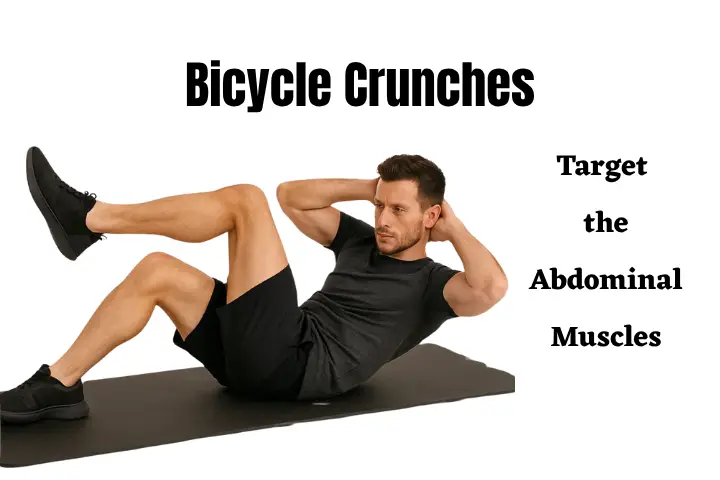
Bicycle crunches are a staple exercise beginning with B that target the abdominal muscles, especially the obliques, and mimic the pedalling motion of riding a bike. They’re considered one of the most effective core-strengthening movements because they incorporate both rotation and extension of the torso. As a low-impact movement, they’re safe for beginners and can be performed on a mat at home. These b exercises not only sculpt your midsection but also help improve trunk mobility and posture.
Instructions:
- Lie Down: Lie flat on your back with knees raised and hands behind your head.
- Lift: Raise your shoulders off the mat, engaging your core.
- Twist: Bring your right elbow toward your left knee.
- Extend: Simultaneously straighten your right leg outward.
- Switch: Alternate sides in a continuous, pedalling motion.
Muscles Involved:
- Rectus abdominis
- Obliques
- Hip flexors
Beginner Tip: Keep movements slow and controlled to avoid neck strain. Quality matters more than speed.
3. Bridge Pose (Glute Bridge)
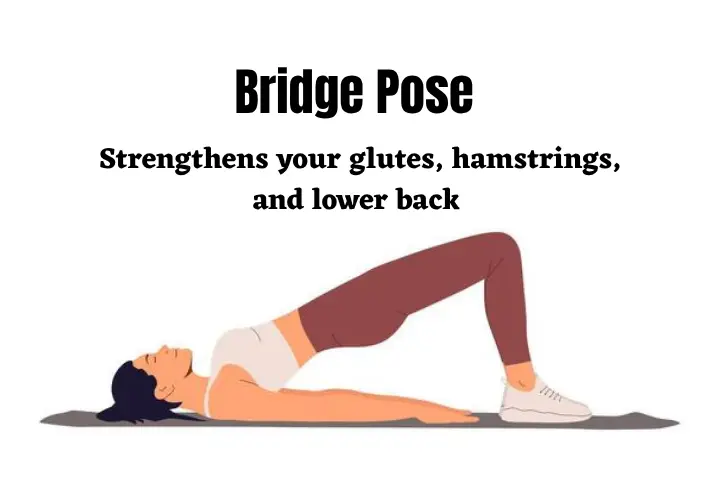
Bridge Pose, also known as the Glute Bridge, is a restorative yet powerful b exercise that strengthens your glutes, hamstrings, and lower back while also improving spinal alignment. It’s frequently used in physical therapy and yoga due to its low impact and high benefit for postural correction and pelvic stability. If you sit for long hours, this exercise starting with B helps activate underused posterior muscles and encourages better movement mechanics in your hips and spine.
Instructions:
- Set Up: Lie on your back, bend knees, and place feet flat on the ground.
- Brace: Engage your core and keep arms flat beside your body.
- Lift: Drive through your heels to raise hips off the floor.
- Squeeze: Contract your glutes and hold at the top for 3–5 seconds.
- Lower: Slowly bring your hips back down to the mat.
Muscles Involved:
- Glutes,
- Hamstrings
- Lower back
- Core
Beginner Tip: Engage your core to avoid over-arching the back. Add a resistance band above the knees for more challenge later.
4. Bent-Over Rows
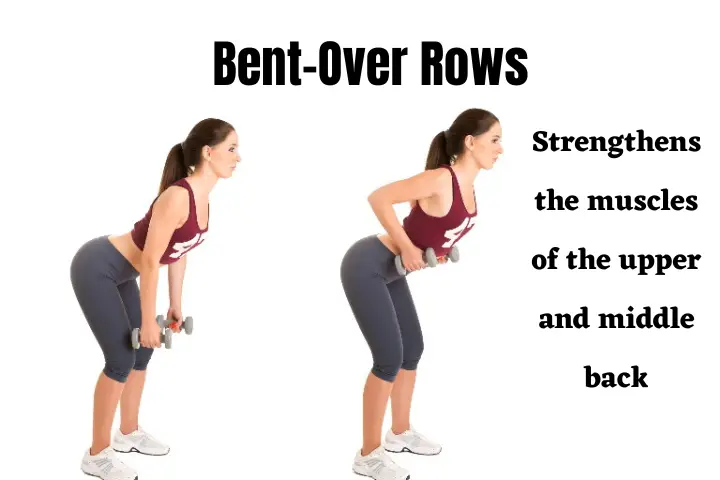
Bent-over rows are an essential upper-body exercise that starts with B, focused on strengthening the muscles of the upper and middle back. By bending at the hips and pulling weight toward the torso, you engage the lats, rhomboids, traps, and biceps. This movement helps reverse rounded shoulders and poor posture, often caused by sitting or working on screens for long periods. Whether using dumbbells, bands, or household items, these b exercises are a must for a well-balanced physique.
Instructions:
- Stand: Stand with feet hip-width apart, holding a weight in each hand.
- Hinge: Bend at the hips while keeping your spine straight and chest up.
- Hang: Let your arms extend downward, palms facing inward.
- Pull: Drive elbows back and squeeze shoulder blades together.
- Release: Lower weights slowly with control.
Muscles Involved:
- Lats
- Rhomboids
- Traps
- Biceps
Beginner Tip: Start light to master the form. Keep your spine neutral and avoid jerky movements.
5. Box Jumps
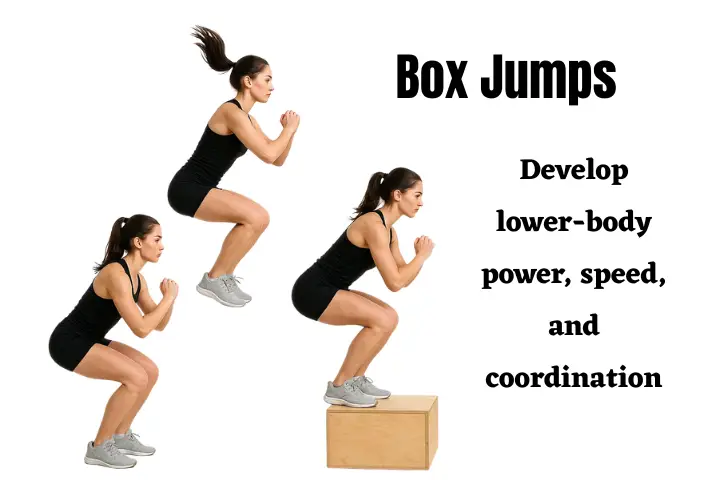 Box jumps are an explosive plyometric exercise beginning with B, ideal for developing lower-body power, speed, and coordination. Used in athletic and functional training, this move increases your fast-twitch muscle fibre recruitment and agility. Although intense, box jumps can be scaled for beginners by adjusting the box height or using a stable low step. As one of the most dynamic b exercises, it’s great for breaking plateaus and improving cardiovascular endurance too.
Box jumps are an explosive plyometric exercise beginning with B, ideal for developing lower-body power, speed, and coordination. Used in athletic and functional training, this move increases your fast-twitch muscle fibre recruitment and agility. Although intense, box jumps can be scaled for beginners by adjusting the box height or using a stable low step. As one of the most dynamic b exercises, it’s great for breaking plateaus and improving cardiovascular endurance too.
Instructions:
- Align: Stand facing a sturdy box or platform, feet shoulder-width apart.
- Prep: Slightly bend knees and swing arms behind you.
- Jump: Push through your feet and leap onto the box, landing softly.
- Stand: Fully extend your hips at the top.
- Step Down: Carefully return to the floor one foot at a time.
Muscles Involved:
- Quads
- Glutes
- Calves
- Core
Beginner Tip: Use a cushion or step to begin. Focus on soft, controlled landings to avoid injury.
6. Bear Crawls
Bear crawls are a functional exercise starting with B that mimic animal movement to engage your full body — particularly your core, shoulders, and quads. This movement builds coordination, joint stability, and stamina while also training cross-body patterns, which are essential for real-life motion. Though it looks playful, the bear crawl is a serious conditioning drill used in sports training and warm-ups. As a beginner, you can take it slow and short to build up endurance and strength.
Instructions:
- Crouch: Start on all fours with knees just off the floor.
- Tighten: Keep your back flat and core engaged.
- Crawl: Move right hand and left foot forward together.
- Alternate: Switch to left hand and right foot forward.
- Repeat: Continue crawling forward in a slow, stable motion.
Muscles Involved:
- Shoulders,
- Chest
- Core
- Quads
- Hamstrings
Beginner Tip: Start slow with fewer steps and rest between rounds. This exercise starting with B improves agility and mobility too.
7. Backward Lunges

Backward lunges are a safer variation of traditional lunges, especially effective for beginners. This b exercise allows better control over knee alignment while building unilateral leg strength and stability. They improve coordination and reduce the risk of knee strain compared to forward lunges. By training one leg at a time, this exercise beginning with B helps balance muscle development and corrects imbalances between your dominant and non-dominant leg.
Instructions:
- Start: Stand upright with feet hip-width apart.
- Step Back: Extend one leg behind you and drop into a lunge.
- Lower: Keep front knee at 90 degrees and back knee just above the floor.
- Push: Drive through the front heel to return to start.
- Alternate: Switch legs and repeat for even reps on both sides.
Muscles Involved:
- Glutes
- Hamstrings
- Quads
- Calves
Beginner Tip: Use a chair or wall for balance. Keep movements slow and controlled for best results.
These Top 7 exercises that start with B cover a wide range of benefits, from strength and flexibility to endurance and coordination. Whether you’re doing b exercises at home or in the gym, this well-rounded set ensures your routine is effective and never boring. These exercises that start with B are your go-to building blocks for a strong, functional body, and they’re all beginner-friendly too!
How to Start B Exercises (Beginner’s Step-by-Step Guide)
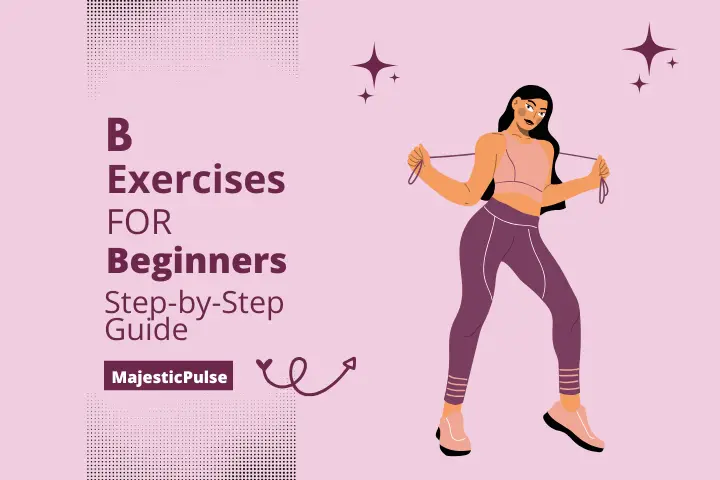
Wondering how to start exercises that start with B? You’re in the right place. Whether you’re entirely new to fitness or just looking to restart, this beginner’s guide will help you ease into movement with confidence.
The Top 7 exercises that start with B can be performed anywhere, require minimal equipment, and are easy to learn, making them perfect for home workouts.
Let’s break down how to structure your first few sessions with b exercises, step by step:
Warm-Up (5–7 Minutes): Prepping Your Body
Before diving into the workout, it’s essential to prepare your muscles and joints. Warming up increases blood flow, improves flexibility, and reduces injury risk.
Light Cardio (2–3 minutes):
- March in place, jog gently, do jumping jacks, or perform high knees.
- Light cardio raises your heart rate, warms your muscles, and wakes up your body, essential before attempting even basic b exercises.
Dynamic Stretching (3–4 minutes):
- Include moves like leg swings, arm circles, torso twists, or walking lunges.
- These movements mimic actions in your main workout and increase range of motion, especially for exercises like backward lunges, bear crawls, and burpees.
Avoid static stretches here; save those for cooldowns.
Choose 3–4 B Exercises: Personalise Your Routine
The great thing about exercises that start with B is the variety; you can mix cardio, strength, and core work. Tailor your workout based on what you want to target:
Full-Body Combo:
- Burpees
- Box Jumps
- Bear Crawls
Core-Focused:
- Bicycle Crunches
- Bridge Pose
- Bear Crawls
Lower Body Focus:
- Bridge Pose
- Backward Lunges
- Box Jumps
Upper Body Focus:
- Bent-Over Rows
- Bear Crawls
- Burpees
Pick what suits your goals and energy level for the day. As a beginner, don’t overdo it, 3 or 4 movements per session is plenty.
Start simple, master form, and then scale up intensity.
Perform 2 Sets of 10 Reps Per Exercise
You’ve chosen your exercises, now it’s time to move!
- Do 2 complete sets of 10 reps for each selected b exercise.
- For time-based moves (like Bear Crawls or Bicycle Crunches), perform for 20–30 seconds per round.
Rest:
- Rest for 30–60 seconds between exercises.
- Take up to 90 seconds between sets if needed.
Focus on Form:
- Perform every movement with control.
- Don’t rush! Especially with complex exercises like burpees or bent-over rows.
- Use a mirror or video yourself to check posture.
Quality always trumps quantity. Doing fewer reps well is better than many done poorly.
Use a Mat for Comfort and Safety
A workout mat might seem optional, but it can make a huge difference in comfort and injury prevention.
Benefits of Using a Mat:
- Cushioning for your spine during Bicycle Crunches or Bridge Pose
- Support for knees and wrists during Bear Crawls or Burpees
- Non-slip surface for lunges and jumps
- Defining your workout space for better focus
Mat Recommendations:
- Choose a non-slip, medium-thickness yoga mat (5–8mm thick)
- Keep it clean and sweat-free for a better grip
If you’re working out on tile or hardwood, a mat is a must-have for safety and support.
Cool Down (2–3 Minutes): Recovery and Reset
Winding down after a workout is just as important as starting one.
Static Stretching:
- Focus on the muscles you used. Stretch your quads, hamstrings, glutes, back, and shoulders.
- Hold each stretch for 15–30 seconds, breathing deeply.
Deep Breathing:
- Sit or lie comfortably, and breathe in through your nose, out through your mouth.
- Take 4–6 slow breaths to bring your heart rate down.
Hydration:
- Drink water to replenish lost fluids, even in short home workouts.
Cooling down helps reduce soreness, improve flexibility, and support mental relaxation post-workout.
Still Wondering How to Start Exercises That Start with B at Home?
Let’s recap the essentials:
- You don’t need fancy equipment — most of these b exercises are bodyweight-based.
- You don’t need a lot of time — 20–30 minutes is enough to complete your beginner session.
- You don’t need prior experience — the movements are scalable and beginner-friendly.
- You do need consistency — repeat this plan 2–3 times per week and adjust as you grow stronger.
With the right plan and mindset, the Top 7 exercises that start with B can be your stepping stones to better fitness — at home, at your pace.
Tips for Proper Form During B Exercises
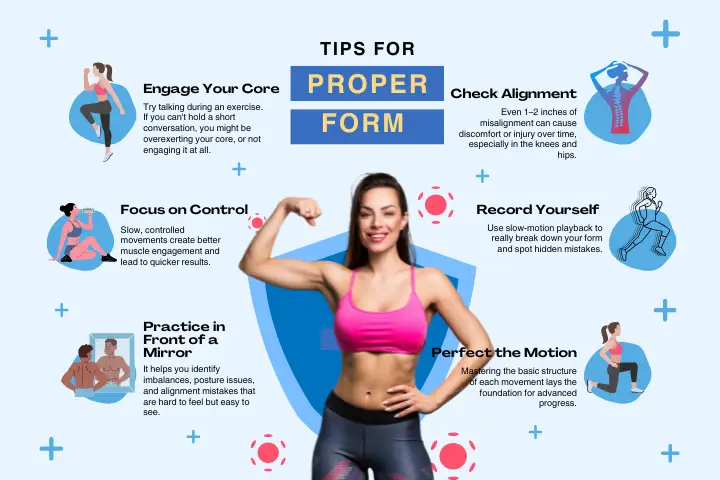
To truly benefit from the Top 7 exercises that start with B, form is everything. Good form not only maximises your results but also keeps you safe from injury. Even the most basic movements, when done incorrectly, can put strain on joints and muscles. That’s why proper alignment, core engagement, and control are key, especially for high-impact moves like burpees and box jumps.
Here are practical tips to help you master proper form and movement patterns for your b exercises:
Engage Your Core in Every Movement
Your core isn’t just for ab exercises; it stabilises your entire body.
Whether you’re holding a Bridge Pose, crawling like a bear, or powering through bicycle crunches, keeping your abdominal muscles engaged helps protect your spine and improve overall balance. To do this, imagine pulling your belly button in toward your spine — not sucking in, but activating.
Bonus Tip: Try talking during an exercise. If you can’t hold a short conversation, you might be overexerting your core, or not engaging it at all.
Slow Down and Focus on Control
Don’t let excitement or momentum ruin your form.
Exercises like burpees, box jumps, and bent-over rows are tempting to rush, but speed can lead to sloppy posture and potential injuries. Slow, controlled movements create better muscle engagement and lead to quicker results.
Think: “Form over reps.” Quality reps beat rushed sets every time.
Practice in Front of a Mirror
Visual feedback is one of the most powerful tools in learning form.
Set up a full-length mirror (or use your phone camera in selfie mode) when trying exercises like backward lunges or bent-over rows. It helps you identify imbalances, posture issues, and alignment mistakes that are hard to feel but easy to see.
Notice your knees cave in during lunges or your back rounds during rows? That’s your cue to adjust.
Check Alignment, Especially for Jumps and Lunges
Joint safety starts with alignment.
For explosive moves like box jumps, make sure your knees are aligned with your toes and not buckling inward. For backward lunges, your front knee should form a 90-degree angle and stay stacked above your ankle, not pushing over your toes.
Even 1–2 inches of misalignment can cause discomfort or injury over time, especially in the knees and hips.
Record Yourself and Review
Sometimes your body feels like it’s doing the right thing… until you watch it back.
Set up your phone and record a set of burpees, bicycle crunches, or bear crawls. Then review it like a coach: Is your back flat? Are your movements smooth? Are you compensating with the wrong muscles?
Use slow-motion playback to really break down your form and spot hidden mistakes.
Start with Fewer Reps, Perfect the Motion
Beginners often try to “go big” too fast, and that’s where poor form creeps in.
It’s better to do 6 solid burpees with great form than 15 rushed, floppy ones. Start with low reps and gradually build volume as your control and strength improve. Mastering the basic structure of each movement lays the foundation for advanced progress.
Think of reps as a tool for learning, not a number to chase.
Keep a Neutral Spine and Open Chest
This one’s crucial, especially for exercises like bent-over rows and bridge pose.
Avoid rounding your back or collapsing your chest. A neutral spine means your back follows its natural curve, and your shoulders stay relaxed but pulled slightly back. This protects your spine, keeps your balance stable, and reduces fatigue-related form breakdown.
Pro tip: Imagine you’re trying to show off a logo on your chest, keep it “visible” and upright.
Use Cues and Reminders
Create personal checklists or verbal cues that remind you how to move.
Example:
- “Tight core, proud chest” for bent-over rows
- “Heels down, soft landing” for box jumps
- “Long spine, steady breath” for bridge pose
Over time, these mini mantras become second nature, helping you maintain form without overthinking every move.
By keeping these form tips in mind, you’ll get more out of your Top 7 exercises that start with B, avoid injury, and build confidence, especially if you’re new to working out or exercising at home.
Let your workout be intentional, controlled, and informed. Proper form is what turns ordinary b exercises into powerful results.
Common Mistakes to Avoid with B Exercises
- Rushing Through Movements: Fast reps in exercises like burpees or lunges can harm form — slow down and focus on control.
- Neck Strain in Bicycle Crunches: Don’t pull your head forward — keep your hands light behind your ears and engage your core.
- Arching the Back in Bridge Pose: Overextending your spine causes strain — press your feet firmly into the floor and squeeze your glutes.
- Hard Landings in Box Jumps: Landing with stiff legs stresses your joints — bend your knees slightly and land softly like a spring.
- Skipping Warm-Ups: Cold muscles are injury-prone — spend 5 minutes on dynamic stretches and light cardio first.
- Doing Too Much at Once: Tackling all exercises without a plan overwhelms beginners — start with 3–4 b exercises and build gradually.
- Inconsistent Practice: Random workouts don’t build habits — set specific days for your Top 7 exercises that start with B.
- Ignoring Form Cues: Poor posture reduces impact — use a mirror or record yourself to check alignment and technique.
Benefits of Exercises That Start With B
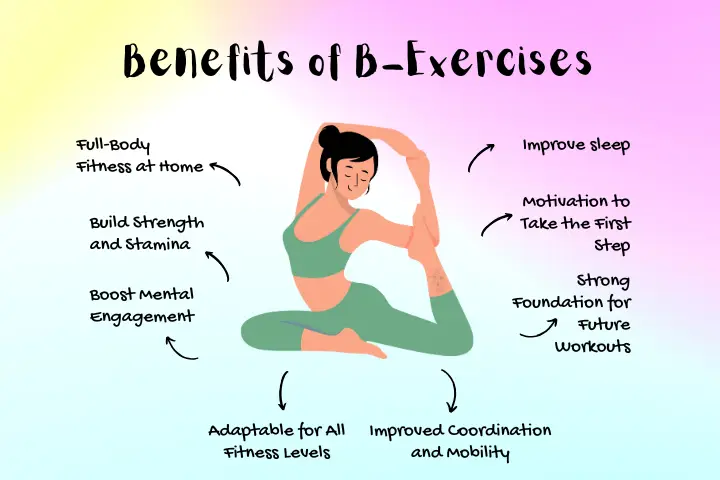
Looking to understand why these exercises that start with B deserve a spot in your routine? Whether you’re a beginner or just exploring new moves, b exercises bring a host of benefits. From building strength to boosting motivation, the Top 7 exercises that start with B offer a solid foundation for any fitness journey. Let’s break down exactly what makes them so powerful.
Full-Body Fitness at Home
B exercises like burpees, bear crawls, and bridge pose target multiple muscle groups, giving you a comprehensive workout without the need for gym equipment. These exercises that start with B are perfect for building strength, endurance, and flexibility in one routine.
Build Strength and Stamina
One of the standout perks of doing the Top 7 exercises that start with B is the steady development of muscular strength and cardiovascular endurance. Incorporating exercises starting with B regularly improves both power and performance.
Boost Mental Engagement
With plenty of variety in exercises beginning with B, your workout never feels boring. The changing movement patterns keep your mind active and motivated, helping you stay consistent and challenged.
Adaptable for All Fitness Levels
Whether you’re a newbie or a seasoned mover, b exercises like bent-over rows or backward lunges can be modified to suit your level. This flexibility makes exercises that start with B especially beginner-friendly.
Improved Coordination and Mobility
From balance work in bridge pose to agility in bear crawls, exercises starting with B enhance coordination, body awareness, and joint mobility; all vital for functional everyday movement.
Strong Foundation for Future Workouts
Starting with exercises beginning with B helps build proper form, confidence, and consistency. This creates a solid base for tackling more advanced workouts down the line.
Motivation to Take the First Step
This beginner’s guide on how to start exercises that start with B simplifies fitness and removes the guesswork. It gives you the tools and structure you need to begin; no gym, no stress, just progress.
Conclusion
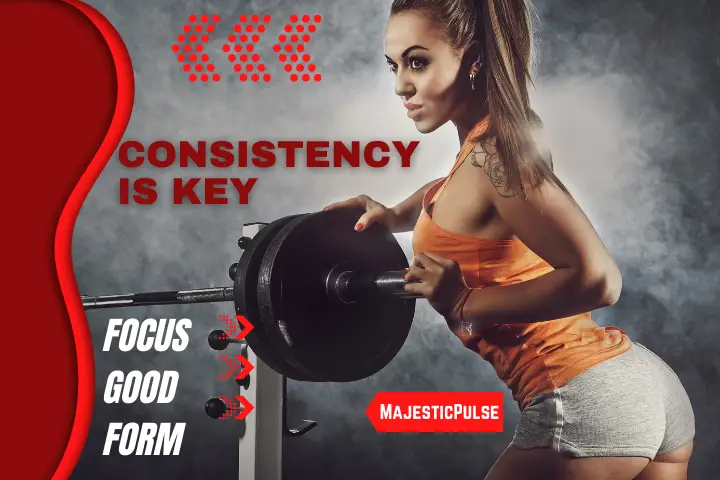
The Top 7 exercises that start with B bring together everything a beginner needs: variety, challenge, and zero intimidation. From bicycle crunches to bear crawls, these b exercises not only keep your routine exciting but also help you build a solid fitness base.
Consistency is key. Focus on good form, stay patient, and return to this guide whenever you’re unsure how to start exercises that start with B, whether you’re working out at home or outdoors. These exercises that start with B fit in effortlessly.
And this is just the beginning; stay tuned for “C” in our ongoing alphabet workout series. If you found this guide helpful, don’t forget to bookmark or share it with friends looking for beginner-friendly exercises beginning with B. Let’s keep moving, one letter at a time!
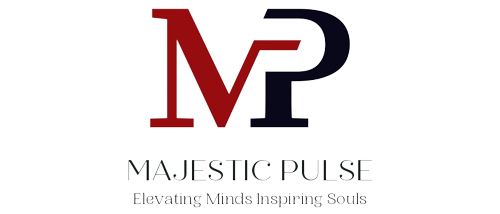
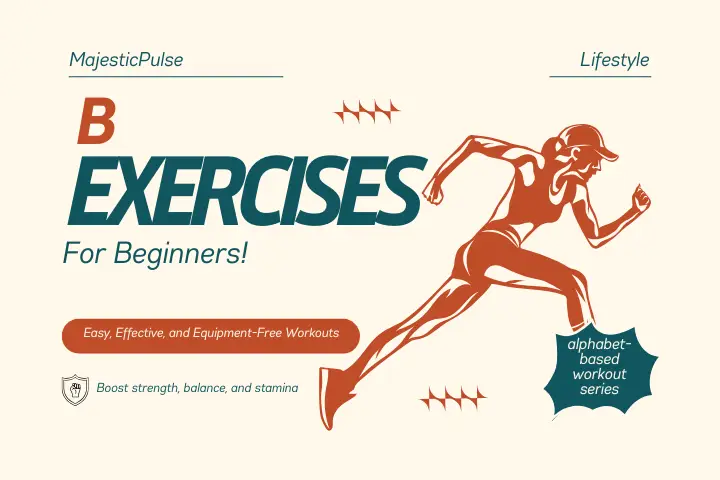
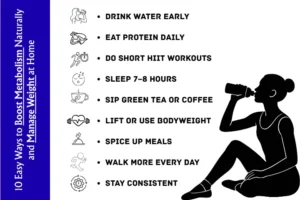
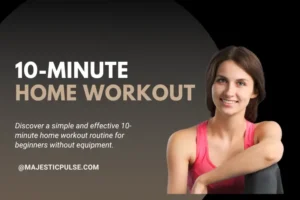

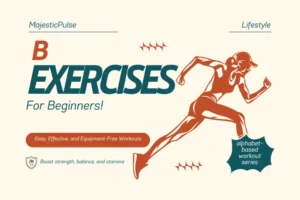
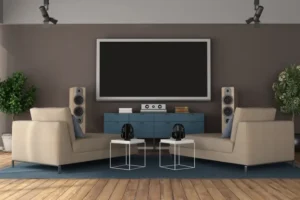



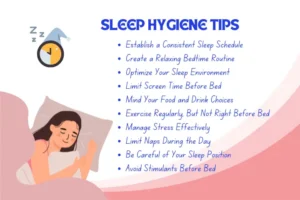



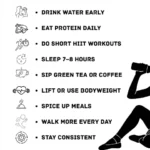


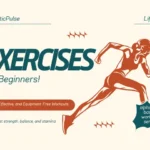


3 Responses
Howdy would you mind stating which blog platform you’re using? I’m planning to start my own blog in the near future but I’m having a hard time making a decision between BlogEngine/Wordpress/B2evolution and Drupal. The reason I ask is because your design seems different then most blogs and I’m looking for something completely unique. P.S Apologies for getting off-topic but I had to ask!
My experience is with WordPress and its good.
F*ckin¦ awesome issues here. I¦m very satisfied to look your article. Thank you a lot and i’m having a look ahead to contact you. Will you please drop me a mail?